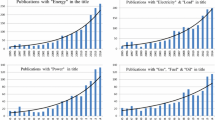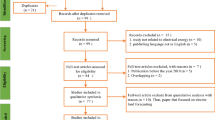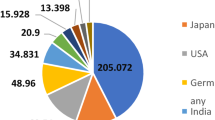Abstract
Aiming to the disadvantages of short-term load forecasting with empirical mode decomposition (EMD) such as mode mixing and many high-frequency random components, a new short-term load forecasting model based on ensemble empirical mode decomposition (EEMD) and sub-section particle swarm optimization (SS-PSO) is proposed in this paper. Firstly, the load sequence is decomposed into a limited number of intrinsic mode function (IMF) components and one remainder by EEMD, which can avoid the mode mixing problem of traditional EMD. Then, through calculating and observing the spectrum of decomposed series, some low-frequency IMFs are extracted and reconstructed. Other IMFs can be forecasted with appropriate forecasting models. Since IMF1 is main random component of the load sequence, the linear combination model is adopted to forecast IMF1. Because the weights of the linear combination model are very important to obtain high forecasting accuracy, SS-PSO is proposed and used to optimize the linear combination weights. In addition, the factors such as temperature and weekday are taken into consideration for short-term load forecasting. Simulation results show that accuracy of the load forecasting model proposed in the paper is higher than that of BP neural network, RBF neural network, support vector machine, EMD and their combinations.









Similar content being viewed by others
References
Shahidehpour M, Yamin H, Zuyi L (2002) Market operations in electric power systems: forecasting, scheduling, and risk management. IEEE Press power engineering series, New York, USA
Hippert HS, Pedreira CE, Castro R (2001) Neural networks for short term load forecasting: a review and evaluation. IEEE Trans Power Syst 16(1):44–55
Haida T, Muto S (1994) Regression based peak load forecasting using a transformation technique. IEEE Trans Power Syst 9(4):1788–1794
Papalexopoulos AD, Hesterberg TC (1990) A regression-based approach to short-term system load forecasting. IEEE Trans Power Syst 5(4):1535–1547
Rahman S, Hazim O (1993) A generalized knowledge-based short term load-forecasting technique. IEEE Trans Power Syst 8(2):508–514
Huang SJ, Shih KR (2003) Short-term load forecasting via ARMA model identification including non-Gaussian process considerations. IEEE Trans Power Syst 18(2):673–679
Peng TM, Hubele NF, Karady GG (1993) An adaptive neural network approach to one-week ahead load forecasting. IEEE Trans Power Syst 8(3):1195–1203
Khotanzad A, Hwang RC, Abaye A, Maratukulam D (1995) An adaptive modular artificial neural network hourly load forecaster and its implementation at electric utilities. IEEE Trans Power Syst 10(3):1716–1722
Saini LM, Soni MK (2002) Artificial neural network-based peak load forecasting using conjugate gradient methods. IEEE Trans Power Syst 17(3):907–912
Kwang-Ho K, Hyoung-Sun Y, Yong-Cheol K (2000) Short-term load forecasting for special days in anomalous load conditions using neural networks and fuzzy inference method. IEEE Trans Power Syst 15(2):559–565
Gwo-Ching L, Ta-Peng T (2006) Application of a fuzzy neural network combined with a chaos genetic algorithm and simulated annealing to short-term load forecasting. IEEE Trans Evolut Comput 10(3):330–340
Peter ZG, Eddy PB, Michael HY (2001) A simulation study of artificial neural networks for nonlinear time-series forecasting. Comput Oper Res 28(4):381–396
James WT, Derek WB (1999) Investigating improvements in the accuracy of prediction intervals for combinations of forecasts: a simulation study. Int J Forecast 15(3):325–339
Liu Y, Yao X (1999) Simultaneous training of negatively correlated neural networks in an ensemble. IEEE Trans Syst Man Cybern Part B 29(6):716–725
Khotanzad A, Elragal H, Lu TL (2000) Combination of artificial neural-network forecasters for prediction of natural gas consumption. IEEE Trans Neural Netw 11(2):464–473
Hanmandlu M, Chauhan BK (2011) Load forecasting using hybrid models. IEEE Trans Power Syst 26(2):20–29
Senjyu T, Mandal P, Uezato K, Funabashi T (2005) Next day load curve forecasting using hybrid correction method. IEEE Trans Power Syst 20(1):102–109
Wei-Chiang H, Yucheng D, Chien-Yuan L, Li-Yueh C (2011) SVR with hybrid chaotic immune algorithm for seasonal load demand forecasting. Energies 4(6):960–977
Amjady N, Keynia F (2009) Short-term load forecasting of power systems by combination of wavelet transform and neuro-evolutionary algorithm. Energy 34(1):46–57
Liao GC, Tsao TP (2006) Application of a fuzzy neural network combined with a chaos genetic algorithm and simulated annealing to short term load forecasting. IEEE Trans Evolut Comput 10(3):330–340
Amjady N, Keynia F (2009) Day-ahead price forecasting of electricity markets by mutual information technique and cascaded neuro-evolutionary algorithm. IEEE Trans Power Syst 24(1):306–318
Bashir ZA, Hawary ME (2009) Applying wavelets to short-term load forecasting using PSO-based neural networks. IEEE Trans Power Syst 24(1):20–27
Bo WG, Tai NL, Zhai HQ, Ye J (2008) A new ARMAX model based on evolutionary algorithm and particle swarm optimization for short-term load forecasting. Electr Power Syst Res 78(10):1679–1685
Huang CM, Huang CJ, Wang ML (2005) A particle swarm optimization to identifying the ARMAX model for short-term load forecasting. IEEE Trans Power Syst 20(2):1126–1133
Lee CM, Ko CN (2009) Time series prediction using RBF neural networks with a nonlinear time-varying evolution PSO algorithm. Neurocomputing 73(1–3):449–460
AlRashidi MR, EL-Naggar KM (2010) Long term electric load forecasting based on particle swarm optimization. Appl Energy 87(1):320–326
Zhihui Z, Yunlian S, Huangqiang L (2007) Hybrid of EMD and SVMs for short-term load forecasting. In: IEEE international conference on control and automation, 30 May–1 June, Huangzhou, pp 1044–1047
Fan XQ, Zhu YL (2010) The application of empirical mode decomposition and gene expression programming to short-term load forecasting. In: 2010 sixth international conference on natural computation, 10–12 Aug, Yantai, vol 8, pp 4331–4334
Bai WL, Liu ZG, Peng QW, Xie J (2009) Research of the load forecasting model based on HHT and combination of ANN. In: 2009 power and energy engineering conference (APPEEC), pp 1–4
Bai WL, Liu ZG, Peng QW, Zhou X (2011) A power system short-term load forecasting model based on HHT. Power Syst Prot Control 2:55–60 (in Chinese)
Liu ZG, Bai WL, Chen G (2010) A new short-term load forecasting model of power system based on HHT and ANN. Lect Notes Comput Sci 6064:448–454
Sun WL, Liu ZG, Li WF (2011) Power system load forecasting based on EEMD and ANN. Lect Notes Comput Sci 6675:429–436
Huang NE, Shen Z, Long SR, Wu ML (1998) The empirical mode decomposition and Hilbert spectrum for nonlinear and non-stationary time series analysis. Proceedings of the Royal Society. Mathematical, physical and engineering sciences, vol 454, pp 903–995
Wu ZH, Huang NE (2009) Ensemble empirical mode decomposition: a noise assisted data analysis method. Adv Adapt Data Anal 1:1–41
Kennedy J, Eberhart R (1995) Particle swarm optimization. IEEE international conference on neural network vol 4, pp 1942–1948
Shi YH, Eberhart R (1998) Parameter selection in particle swarm optimization. Lect Notes Comput Sci 1447:591–600
Fang J (2006) Particle swarm algorithm and its applications. Scientific dissertation, University of electronic science and technology of China, Chengdu (in Chinese)
Shi Y, Eberhar R (1998) A modified particle swarm optimizer. The 1998 IEEE international conference on evolutionary computation, 4–9 May, pp 69–73
Acknowledgments
This study was partly supported by National Nature Science Foundation of China (U1134205, 51007074), Program for New Century Excellent Talents in University (NECT-08-0825) and Fundamental Research Funds for Central Universities (SWJTU11CX141) in China.
Author information
Authors and Affiliations
Corresponding author
Rights and permissions
About this article
Cite this article
Liu, Z., Sun, W. & Zeng, J. A new short-term load forecasting method of power system based on EEMD and SS-PSO. Neural Comput & Applic 24, 973–983 (2014). https://doi.org/10.1007/s00521-012-1323-5
Received:
Accepted:
Published:
Issue Date:
DOI: https://doi.org/10.1007/s00521-012-1323-5




